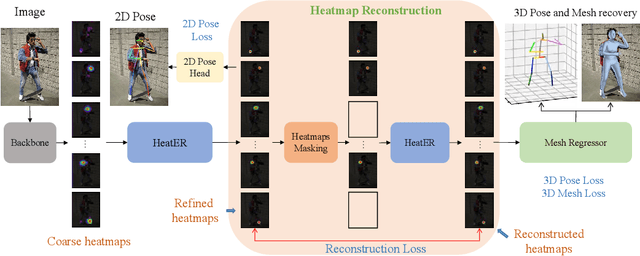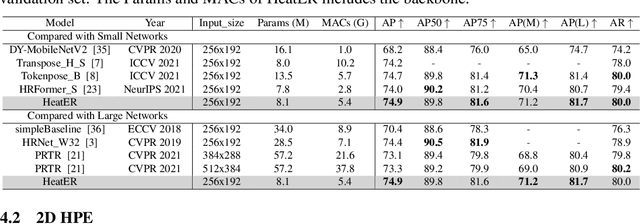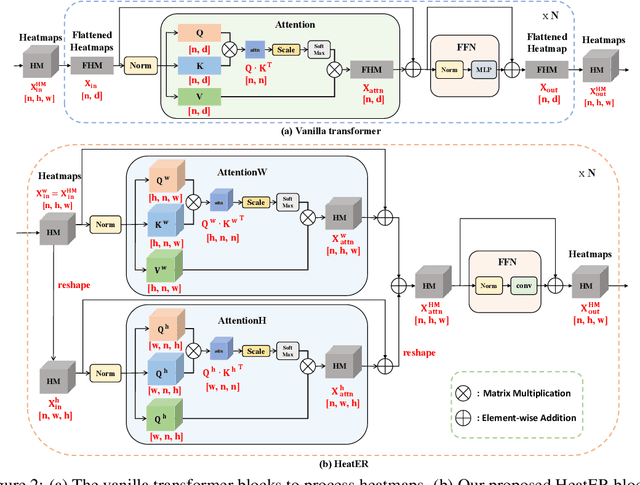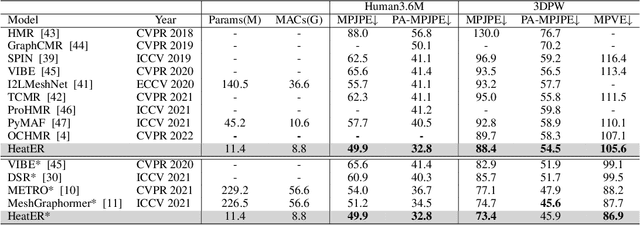HeatER: An Efficient and Unified Network for Human Reconstruction via Heatmap-based TransformER
Paper and Code
May 30, 2022



Recently, vision transformers have shown great success in 2D human pose estimation (2D HPE), 3D human pose estimation (3D HPE), and human mesh reconstruction (HMR) tasks. In these tasks, heatmap representations of the human structural information are often extracted first from the image by a CNN, and then further processed with a transformer architecture to provide the final HPE or HMR estimation. However, existing transformer architectures are not able to process these heatmap inputs directly, forcing an unnatural flattening of the features prior to input. Furthermore, much of the performance benefit in recent HPE and HMR methods has come at the cost of ever-increasing computation and memory needs. Therefore, to simultaneously address these problems, we propose HeatER, a novel transformer design which preserves the inherent structure of heatmap representations when modeling attention while reducing the memory and computational costs. Taking advantage of HeatER, we build a unified and efficient network for 2D HPE, 3D HPE, and HMR tasks. A heatmap reconstruction module is applied to improve the robustness of the estimated human pose and mesh. Extensive experiments demonstrate the effectiveness of HeatER on various human pose and mesh datasets. For instance, HeatER outperforms the SOTA method MeshGraphormer by requiring 5% of Params and 16% of MACs on Human3.6M and 3DPW datasets. Code will be publicly available.
 Add to Chrome
Add to Chrome Add to Firefox
Add to Firefox Add to Edge
Add to Edge